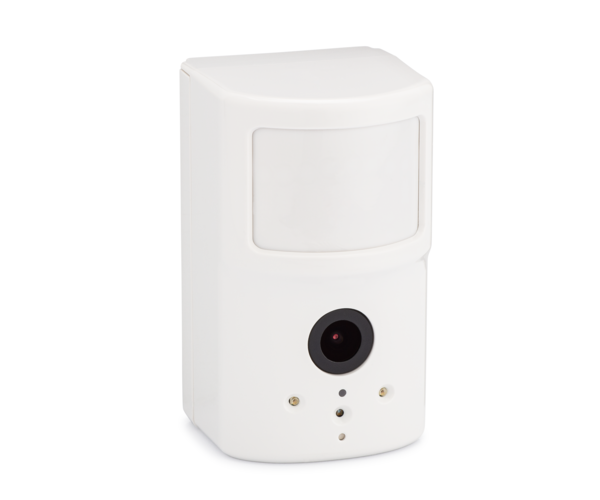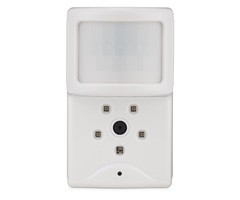How Many Images Can An Alarm.com Image Sensor Store?
An Alarm.com Image Sensor can store between 50 and 3,200 images, depending upon the model and various settings you have configured on Alarm.com. For an Alarm.com Image Sensor, its storage limit is based event limits. Most Alarm.com Image Sensor devices will capture two (2) images per event.

When an Alarm.com Image Sensor is activated, it will capture images. This is referred to as an image sensor event. Most Alarm.com Image Sensors will capture two (2) images per event. The only exception to this rule as of March 2021 is the ADC-IS-300-LP, which instead captures four (4) images per event. Any images taken during an image sensor event are taken within a few seconds of one another.
Depending on a user's settings, they may have images uploaded to Alarm.com automatically after being taken. If you have images uploaded to Alarm.com automatically, then you should refer to this FAQ, which will tell you everything you need to know about Alarm.com Image Sensor Upload Limits. However, if you choose to manually upload your images, then it's likely you have some pictures stored locally on the image sensor that need to be uploaded to Alarm.com for remote viewing. Alarm.com refers to this process as uploading captured images to the Event Gallery, and it can be completed using the website or mobile app.

 Only stored images can be uploaded to the gallery, By setting the process to occur automatically, the images should be uploaded shortly after they are taken, provided that the user has not reached or exceeded their Image Sensor Upload Limits, as defined in the FAQ linked earlier. While most users find automatic uploading to be most convenient (as they rarely reach their upload limits anyway), one advantage of opting to manually upload your images is that you can pick and choose which ones to upload, and which ones to just leave in storage, where they will eventually get automatically deleted and replaced by newer images. This way, if you do take more images than what you have available for upload, you're at least uploading worthwhile images, rather than having bad or crummy images counting towards your Upload Limit due to them being uploaded automatically. If that is the situation you are in, and you are not having your images uploaded automatically, then you may want to know how many images can be stored locally on the device.
Only stored images can be uploaded to the gallery, By setting the process to occur automatically, the images should be uploaded shortly after they are taken, provided that the user has not reached or exceeded their Image Sensor Upload Limits, as defined in the FAQ linked earlier. While most users find automatic uploading to be most convenient (as they rarely reach their upload limits anyway), one advantage of opting to manually upload your images is that you can pick and choose which ones to upload, and which ones to just leave in storage, where they will eventually get automatically deleted and replaced by newer images. This way, if you do take more images than what you have available for upload, you're at least uploading worthwhile images, rather than having bad or crummy images counting towards your Upload Limit due to them being uploaded automatically. If that is the situation you are in, and you are not having your images uploaded automatically, then you may want to know how many images can be stored locally on the device.
Remember that local image sensor uploads are kept track of by events. Each "event" can contain multiple images (usually two) that are taken one second apart. The only exception is the ADC-IS-300-LP, which can take four (4) images, instead of the usual two (2). The number of events that an image sensor can store depends on the image sensors. For the aforementioned ADC-IS-300-LP, the most recent 800 events are stored. And since event can have a maximum of four (4) images, the theoretical maximum images the unit can store is 3,200 images.
As for other image sensors, the ADC-IS-100-LP and the ADC-IS-100-GC store the most recent 50 to 80 events, which would equate to 100 to 160 images. The exact limit on event storage depends on how "big" the file size is. Meanwhile, the ADC-IS-200-LP, the ADC-IS-221-LP, the ADC-IS-200-GC, and the ADC-IS-220-GC can store between 800 and 1,200 events, which gives a total image range of 1,600 to 2,400 images. Again, the exact limit will depend on the file size of the events.
Event storage for image sensors works on a pretty straightforward basis. Once the maximum limit is reached, the oldest event(s) are deleted to make room for any incoming ones. When an old event is "overwritten" to accommodate for a new event, that old event will appear in the event history as "Not Available", and it will not be able to be uploaded. Basically, once an event is overwritten, it is lost forever. You want to upload your events early before this happens, as there is no way to recover a lost event. Just keep track of your image upload limits, and remember to upload regularly if you choose manual uploads, and you shouldn't encounter any major issues.
Please note that the only image sensor storage limits are only listed by Alarm.com for their own "first party" image sensors that they manufacture. If you are using compatible image sensors from other manufacturers, such as the DSC PowerG Image Sensors, then those devices likely have their own storage limits that should be taken into consideration.
Did you find this answer useful?
We offer alarm monitoring as low as $10 / month
Click Here to Learn MoreRelated Products


Related Categories
- Answered
